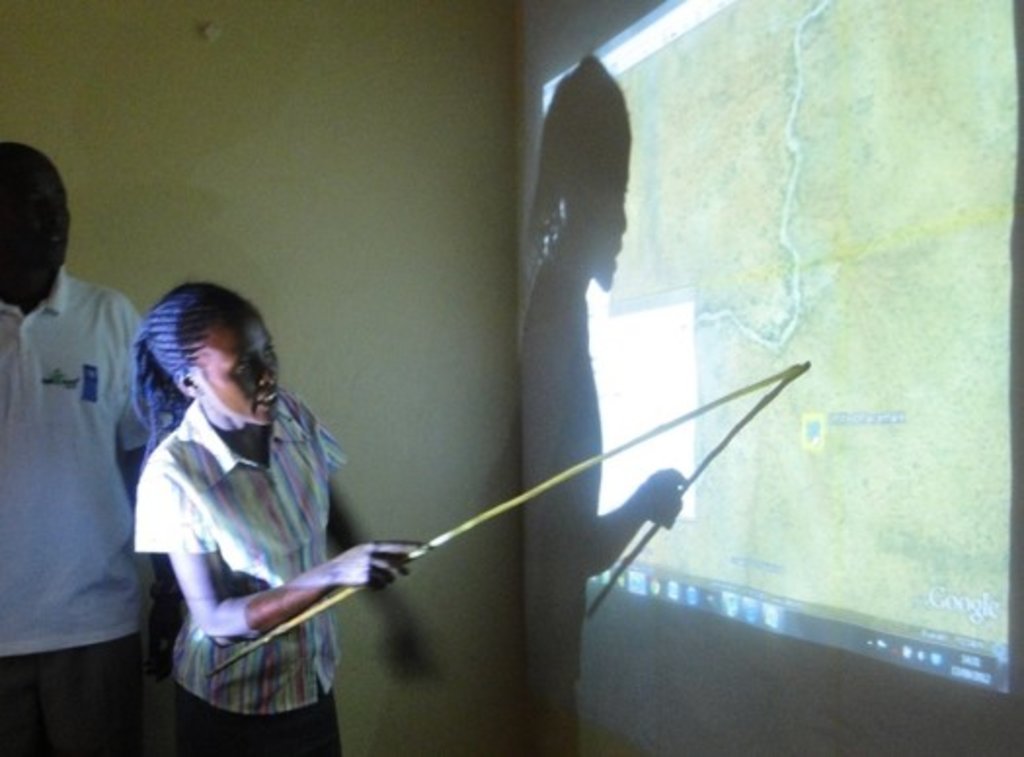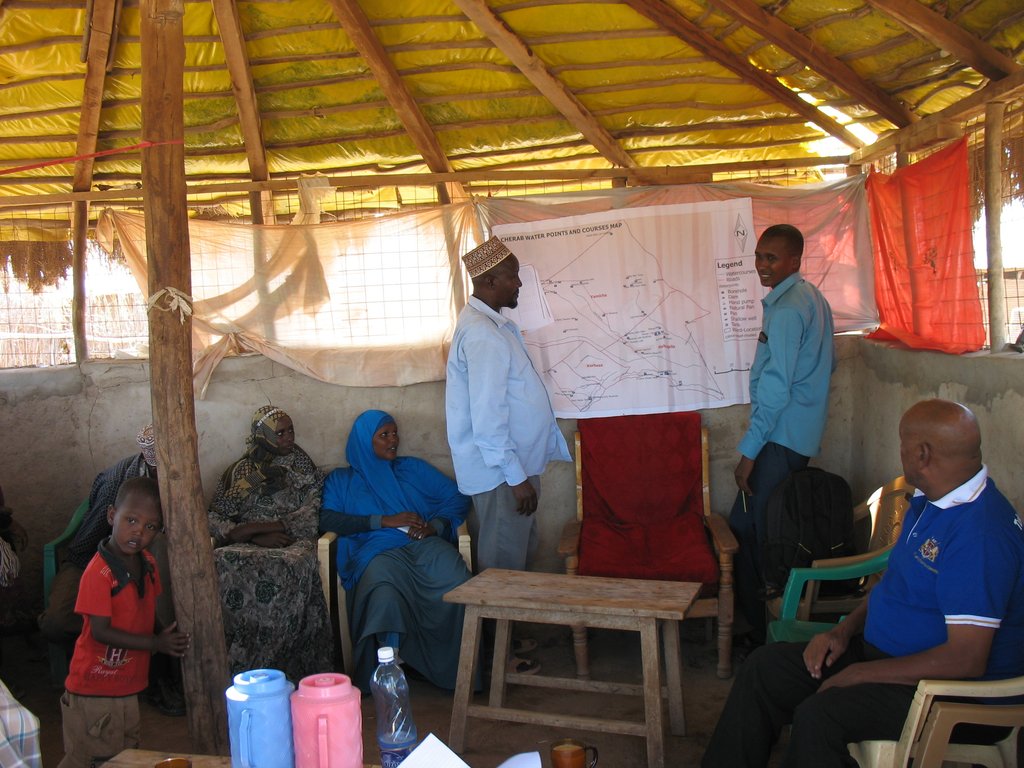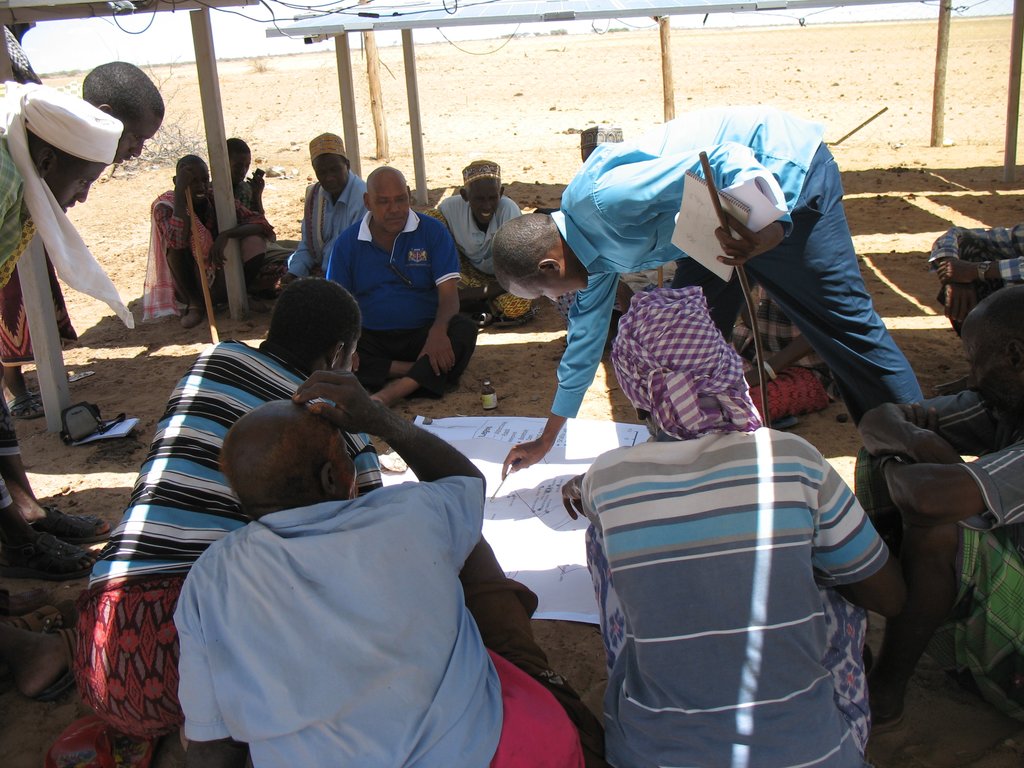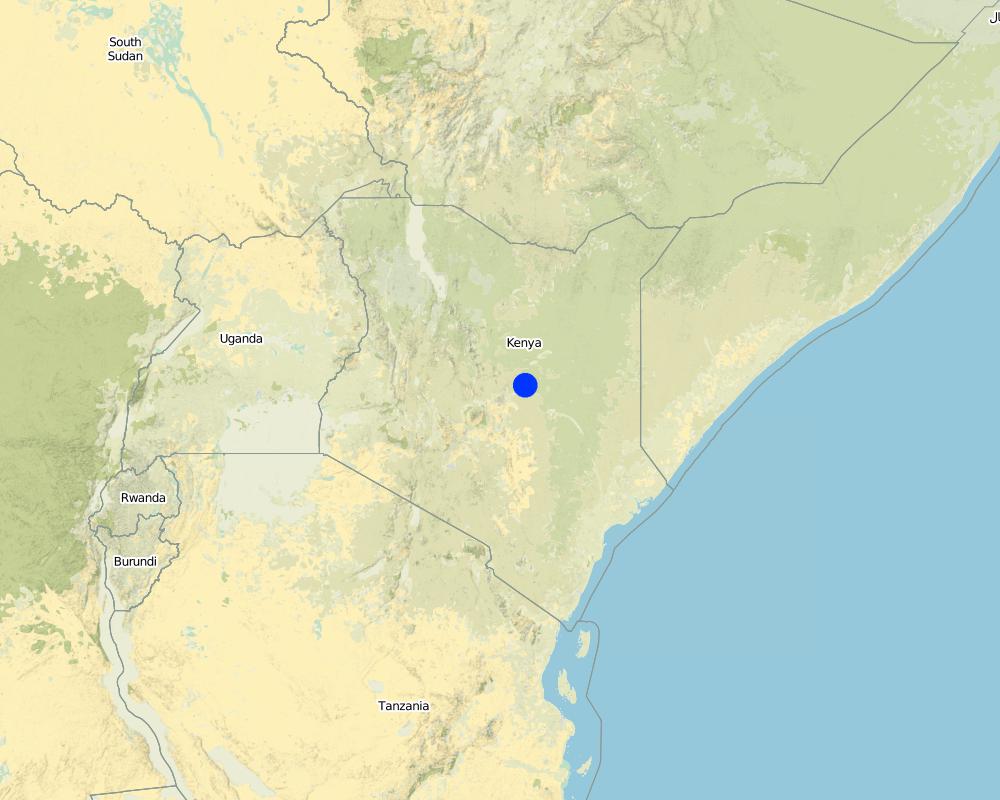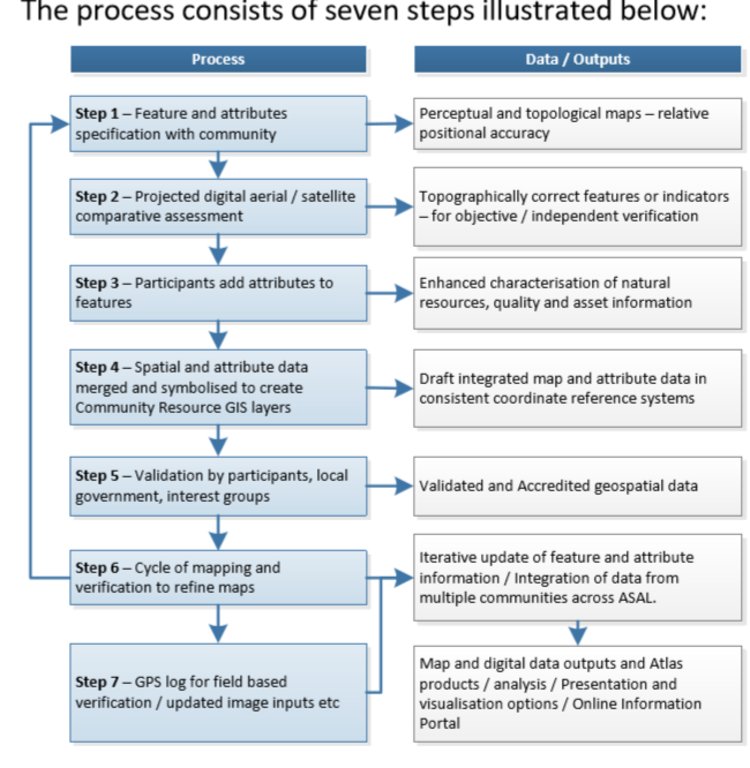Participatory mapping, database building, and monitoring of rangeland resources [肯尼亚]
- 创建:
- 更新:
- 编制者: IBRAHIM JARSO
- 编辑者: Caroline King-Okumu
- 审查者: Donia Mühlematter, Rima Mekdaschi Studer, Hanspeter Liniger
Resource Mapping
approaches_3439 - 肯尼亚
- Participatory mapping, database building, and monitoring of rangeland resources: July 5, 2018 (inactive)
- Participatory mapping, database building, and monitoring of rangeland resources: July 31, 2018 (inactive)
- Participatory mapping, database building, and monitoring of rangeland resources: July 5, 2018 (inactive)
- Participatory mapping, database building, and monitoring of rangeland resources: Sept. 3, 2018 (inactive)
- Participatory mapping, database building, and monitoring of rangeland resources: May 22, 2018 (inactive)
- Participatory mapping, database building, and monitoring of rangeland resources: May 13, 2018 (inactive)
- Participatory mapping, database building, and monitoring of rangeland resources: Nov. 2, 2021 (public)
- Participatory mapping, database building, and monitoring of rangeland resources: May 19, 2018 (inactive)
查看章节
全部展开 全部收起1. 一般信息
1.2 参与方法评估和文件编制的资源人员和机构的联系方式
土地使用者:
Konsole Hussein
+254 728 064578
saritehussein@yahoo.com
Garbatulla Ward Adaptation Planning Committee
P.O. BOX 1Garbatulla
肯尼亚
Non-State Actor:
Abdullahi Shandey
+254 721109171
midp2003@gmail.com
Merti Integrated Development Program (MID-P)
Merti VillageIsiolo Kenya
肯尼亚
SLM专业人员:
有助于对方法进行记录/评估的项目名称(如相关)
Strengthening Adaptation and Resilience to Climate Change in Kenya Plus (StARCK+)有助于对方法进行记录/评估的机构名称(如相关)
Resource Advocacy Programme (RAP) - 肯尼亚1.3 关于使用通过WOCAT记录的数据的条件
(现场)数据是什么时候汇编的?:
16/01/2018
编制者和关键资源人员接受有关使用通过WOCAT记录数据的条件。:
是
2. SLM方法的描述
2.1 该方法的简要说明
Participatory mapping and monitoring of vegetation types and other natural resources in the rangelands. This involves convening stakeholder groups, reviewing conditions of rangeland, water and other resources under changing climatic conditions.
2.2 该方法的详细说明
该方法的详细说明:
Participatory digital mapping using satellite imagery and digital earth and other open source Geographic Information Systems (GIS) is a practical tool that can bridge knowledge and communication gaps between pastoral communities and county government planners. It offers an effective ‘tool’ for participatory planning and decision-making in support of climate change adaptation efforts in the drylands of Kenya.The use of participatory mapping is not new in seeking to capture communities’ understanding and use of natural resources. These maps are typically drawn on the ground using stones, sticks and other locally available materials to depict key features such as schools, water points, and forest areas, etc. However the process used in Isiolo County combines digital mapping with community-drawn perception maps. This offers a number of extra benefits. While fully capturing the wealth of local knowledge, they contain an in-built coordinate system which corresponds to a global reference grid, enabling their linkage to maps used in formal systems. Furthermore, the coordinate system provides a geographically precise basis from which to discuss natural resource management, making outputs of participatory mapping more universally useable. These benefits, however, need to be carefully balanced to avoid the risk that through this process, pastoral resources – which are highly dynamic - are ‘frozen’ in time and space. Mapping processThe participatory mapping process has adopted GIS workflows within community workshops, enabling the creation of integrated, consistent and standardized geospatial information. The process follows seven steps:Step 1: Community level meetings to develop perception maps drawn on the ground and/or on paper. The product is a community perception map of those resources that are important for their livelihood systems. This map should be created in a community setting to enable the participation of a large group. Several maps may be produced by smaller sub-groups (women, the youth, elders etc) and then amalgamated. The final map is then copied onto paper. Step 2. Digital mapping is introduced. This step takes place in a workshop setting with a smaller group of key informants chosen by the community - as well as county government planners and technical staff. The presence of the latter is critical to the process of ‘legitimizing’ community knowledge. Following a quick explanation of satellite imagery, Google Earth is projected onto a wall alongside the perception maps developed under step 1. The use of Google Earth is only for orientation, and to enable participants to navigate the imagery and to cross-reference their paper-mapped key resources against the satellite imagery. Features that participants feel are important (e.g. water points, wet and dry season grazing areas, drought reserves, wildlife routes) are then captured digitally using open source applications: Quantum GIS (QGIS) and JOSM, the Open Street Map editing platform.This produces the coordinates that pinpoint the locations of natural resources in a manner that can be independently and objectively verified. The highly interactive process of geo-referencing local knowledge to a coordinate reference system allows resource maps to be produced to any scale, and in real-time, with the community. Step 3. Qualitative and quantitative attributes describing the key resources are collected. As participants add features to the map, they also describe their specified characteristics or attributes. Attribution data includes a fuller description of the physical characteristics of the resource (e.g. soil type, waterquantity and quality, pasture species) as well as issues concerning their management (e.g. under customary or modern management, land tenure status, negotiated or paid access, area of conflict). Updating this data on a regular basis adds temporal and trend data to the spatial database. This underlines the need to structure data systems well to manage time-based data and to record updates.Steps 4-6: Data verification cycles are integrated into the mapping process in order to capture community feedback and verify the records in the geospatial data and their attribute values against the specification. The mapping includes a series of validation, cross-checking and verification cycles, run with the community - and in a few instances on-the-ground verification termed ‘groundtruthing’. Step 7: Field validation. Field validation is carried out where the verification stages highlight gaps in information. Verification consists of targeted field visits to take GPS markers, or holding meetings with the local community to clarify particular issues.
2.3 该方法的照片
2.5 采用该方法的国家/地区/地点
国家:
肯尼亚
区域/州/省:
Isiolo
有关地点的进一步说明:
Pasturalist areas
Map
×2.6 该方法的开始和终止日期
注明开始年份:
2012
终止年份(若不再采用该方法):
2015
注释:
The mapping process needs to be continuous as new community resources are identified and added
2.7 方法的类型
- 基于项目/方案
2.8 该方法的主要目的/目标
- To allow participation for community groups to inform planners.- To provide the necessary precision for planners to use local knowledge effectively.- To make a ‘bridge’ for information to flow between customary and formal institutions.- To better share ideas through communication tools using powerful visual language.- To demonstrate the depth of local knowledge about natural resources and with that, demonstrate the importance of these resources.- To identify gaps and risks in the system being mapped.- To compare one plan with another to see how complimentary/contradictory they are.
2.9 推动或妨碍实施本办法所适用的技术的条件
社会/文化/宗教规范和价值观
- 启动
Communities are awed by the technology that allows them to see their resources while seated in a single specific location. The approach doesn't conflict with any community social, cultural, religious norms and values.
- 阻碍
Minimal local capacity is required to use the technology.
财务资源和服务的可用性/可得性
- 启动
A brief GIS training of four weeks can allow county government staff to develop, add and update the database.
- 阻碍
Short GIS training courses costs around $850 and facilitation of community engagement meetings may be costly to undertake.
机构设置
- 启动
The approach helps in improving planning at community and government levels, and is accepted by all stakeholders.
- 阻碍
Poor capacity and financial resources can be a challenge.
参与者的的协作/协调
- 启动
The product of the participatory mapping process is beneficial to all actors and many are willing to engage in implementation of the approach.
- 阻碍
Different mapping initiatives are undertaken by actors with various objectives.
法律框架(土地使用权、土地和水使用权)
- 启动
The approach helps in land use planning and supports regulations meant to improve land governance such as a customary natural resource management bill.
- 阻碍
County governments can develop their own spatial plans, but there are only few initiatives underway to map county resources
政策
- 启动
Many policies and laws (including the national constitution) support the mapping of resources to improve land use planning.
- 阻碍
Conflicts over land undermines political will.
土地治理(决策、实施和执行)
- 启动
The approach allows communities to develop their land use plans for resource utilisation, and digitize them - making the work of land governance easier.
- 阻碍
Competing claims over land and land-based resources in community lands means enforcement of the approach is often challenged. Resources along administrative boundaries are claimed by different communities.
了解SLM,获得技术支持
- 启动
New graduates in dryland resource management, and communities' reception of the new technologies, help in acceptance and implementation of the technology.
- 阻碍
58% of the residents of the county (according to the Kenya National Bureau of Statistics socio-economic survey report of 2016) are illiterate and may have difficulties engaging properly with the technology.
市场(购买投入,销售产品)和价格
- 启动
Free open source programmes are available to digitize local knowledge to geo-referenced products.
- 阻碍
Good programmes for mapping are expensive.
工作量、人力资源可用性
- 启动
The technology makes the process simpler and reduces the workload.
- 阻碍
The processes can be tedious because of the paper maps involved, series of validation and verification of features.
3. 相关利益相关者的参与和角色
3.1 该方法涉及的利益相关者及其职责
- 当地土地使用者/当地社区
Jarsa Dedha (customary natural resource management institutions) Community Members (i.e. pastoralists).
Jarsa Dedha identify the most knowledgeable elders from different grazing areas to help in identifying features and providing grazing land management plans that are in place. Community members identify features and contribute to the attributes of the features.
- 社区组织
Kinna Integrated community based initiative (KICBI)Ward Adaptation Planning Committees
They identify features and also contribute to attributes of the features
- SLM专家/农业顾问
Ibrahim Jarso
Support mapping process and also add new features supporting updates to the products.
- NGO
Resource Advocacy Program (RAP)Merti Integrated Development Program (MID-P)Adaptation Consortium
Support the mapping process and mobilize communities and stakeholders for the approach to be implemented properly.
- 地方政府
Isiolo County Government
Support the mapping process with intention to use product for planning purpose and own the product
- 国家政府(规划者、决策者)
Kenya's National Government
Support the planning process - also with the intention of using the product for planning.
- 国际组织
International Institute for Environment and Development (IIED) and theUniversity of Southampton (Geodata Institute)
Support with funding to implement the approach and also provide technical expertise to undertake GIS processing of data.
如果涉及多个利益相关者,请注明领导机构:
WAPC , ADA and IIED
3.2 当地土地使用者/当地社区参与该方法的不同阶段
| 当地土地使用者/当地社区的参与 | 指定参与人员并描述活动 | |
|---|---|---|
| 启动/动机 | 被动 | Resource Advocacy Programme (RAP) undertook discussions with the local community and also with the county and national government in shaping the idea for the approach. |
| 计划 | 互动 | All stakeholders (community, RAP, ADA, IIED, Geodata and Governments) were engaged in the planning for the implementation of the Approach. |
| 实施 | 互动 | Community members and all stakeholders were involved in the implementation of the participatory mapping. |
| 监测/评估 | 被动 | The county government and the actors (RAP, ADA and IIED) monitor the participatory mapping database and improves it. |
3.3 流程图(如可用)
具体说明:
Participatory mapping of community resources has seven steps, which can be summarised under the main groupings of: consultations with the community where key features are identified and mapped on paper; digitization of community identified points by GIS specialists; processing of the data where community identified attributes are incorporated into the data; and feedback sessions for community validation and verification.
作者:
Ibrahim Jarso
3.4 有关SLM技术选择的决策
具体说明谁有权决定选择要实施的技术:
- 所有相关参与者,作为参与式方法的一部分
解释:
The process requires inputs from all the relevant stakeholders. The community provide local knowledge of the features, GIS specialists provide technical expertise and the other local stakeholders provide their knowledge and experience of working in the communities for many years.
明确做出决策的依据:
- 个人经验和意见(无记录)
4. 技术支持、能力建设和知识管理
4.1 能力建设/培训
是否为土地使用者/其他利益相关者提供培训?:
是
明确受训人员:
- 土地使用者
- 现场工作人员/顾问
如果相关,请说明性别、年龄、地位、种族等。:
5 persons trained- One from County Government (Planning Unit), Two from National government (National Drought Management Authority and Kenya Meteorological Department (KMD)) and Two representative of Local NGOs (RAP and MID-P)
培训形式:
- 在职
- 课程
涵盖的主题:
Participatory GIS mapping techniquesInput of data using different platformsUse of GPS devicesValidation of dataData management
注释:
The training was well done with seminars and practical sessions
4.2 咨询服务
土地使用者有权使用咨询服务吗?:
是
指明是否提供了咨询服务:
- 在土地使用者的土地上
说明/注释:
practical sessions were provided in the field and with communities
4.3 机构强化(组织发展)
是否通过这种方法建立或加强了机构?:
- 是,适度
具体说明机构的强化或建立程度:
- 本地
说明机构、角色和职责、成员等。:
Local institutions were able to use the maps to advocate for improved planning.
具体说明支持类型:
- 能力建设/培训
提供进一步细节:
Courses/trainings were provided
4.4 监测和评估
监测和评估是该方法的一部分吗?:
是
注释:
inputs were monitored
若是,该文件是否用于监测和评估?:
是
注释:
It was also used to mapped investments that were done to improve community livelihoods
4.5 研究
研究是该方法的一部分吗?
是
明确话题:
- 生态学
提供进一步的细节,并指出是谁做的研究:
Research on vegetation patterns in Isiolo’s rangelands were conducted by the University of Nairobi's Department of Land and Resource Management.
5. 融资和外部物质支持
5.1 该方法中SLM组成部分的年度预算
如果不知道准确的年度预算,请给出一个范围:
- 10,000-100,000
注释(例如主要的资助来源/主要捐助者):
The approach was supported by RAP and IIED under the Adaptation Consortium with funding from UK's Department for International Development (DfID). The budget is used to convene sub-county level meetings and trainings sessions. Many of the participants costs and preparation costs are not covered.
5.2 为土地使用者提供财政/物质支援
土地使用者是否获得实施该技术的财政/物质支持?:
否
5.3 对特定投入的补贴(包括劳动力)
- 劳动力
| 程度如何 | 对补贴做出具体说明 |
|---|---|
| 充分融资 | Community meetings were supported by the actors in the project (RAP, IIED and Adaptation Consortium). |
- 设备
| 具体说明哪些投入得到了补贴 | 程度如何 | 对补贴做出具体说明 |
|---|---|---|
| 机械 | 充分融资 | Machinery used in the approach was purchased by the actors involved. |
| 工具 | Tools used in the approach were purchased by the actors involved. | |
如果土地使用者的劳动力是一项重要的投入,那么是不是:
- 自愿
注释:
Communities provided the local knowledge to support the approach.
5.4 信用
是否根据SLM活动的方法给予信用值?:
否
6. 影响分析和结论性陈述
6.1 方法的影响
该方法是否有助于当地土地使用者,提高利益相关者的参与度?:
- 否
- 是,很少
- 是,中等
- 是,支持力度很大
Yes, the approach strengthens community rights and management of resources.
这种方法是否有助于基于证据的决策?:
- 否
- 是,很少
- 是,中等
- 是,支持力度很大
Yes greatly – provided databases that did not previously exist.
该方法是否帮助土地使用者实施和维护SLM技术?:
- 否
- 是,很少
- 是,中等
- 是,支持力度很大
Strengthened the traditional system of management of land.
该方法是否提高了SLM的协调性和成本效益?:
- 否
- 是,很少
- 是,中等
- 是,支持力度很大
Improved coordination among the partners and enabled monitoring of resource conditions.
该方法是否提高了土地使用者实施土地管理的知识和能力?:
- 否
- 是,很少
- 是,中等
- 是,支持力度很大
The technology provided digitized observation of resources, and communities realised their wealth of their resources.
该方法是否提高了其他利益相关者的知识和能力?:
- 否
- 是,很少
- 是,中等
- 是,支持力度很大
The Community resource atlas of Isiolo County has been online since July 2015.
Yes greatly, the Approach made local institutions stronger and enhanced their collaboration and data sharing.
该方法是否缓解了冲突?:
- 否
- 是,很少
- 是,中等
- 是,支持力度很大
The Approach mapped conflict hotspots and improved the process of conflict resolution and analysis.
该方法是否改善了性别平等并赋予女性权力?:
- 否
- 是,很少
- 是,中等
- 是,支持力度很大
The process also engaged women in gathering local knowledge of resources and they made a very considerable contribution to the work.
该方法是否鼓励年轻人/下一代土地使用者参与SLM?:
- 否
- 是,很少
- 是,中等
- 是,支持力度很大
The use of GIS fascinated young people and they felt attracted to the process.
该方法是否改善了阻碍SLM技术实施的土地使用权/用户权问题?:
- 否
- 是,很少
- 是,中等
- 是,支持力度很大
The approach guided use of land and also strengthened communities ownership and rights over their land and their available resources.
该方法是否改善了供水和卫生条件?:
- 否
- 是,很少
- 是,中等
- 是,支持力度很大
The approach guided water investments in the community lands and improved placement of water infrastructure.
该方法是否带来了更可持续的能源使用?:
- 否
- 是,很少
- 是,中等
- 是,支持力度很大
The approach mapped boreholes, and the energy used to extract water from them, as well as encouraging use of clean and green energy.
该方法是否提高了土地使用者适应气候变化/极端情况和减轻气候相关灾害的能力?:
- 否
- 是,很少
- 是,中等
- 是,支持力度很大
The approach concretized the community land use plans and guided proper use of their pasture and water - enhancing the community's capacity to adapt to climate related disasters of drought and floods.
6.2 土地使用者实施SLM的主要动机
- 增加生产
The Approach improved planning and management of resources leading to increased productivity
- 减少土地退化
Mapping of Land use plans helped in reducing land degradation.Participatory Mapping Approach was used by International Union for Conservation of Nature (IUCN) to map out degaraded lands in the County and targetted interventions were undertaken with Dedha elders.
- 降低灾害风险
The approach allowed the communities to plan and prepare before disasters happen by identifying fall back areas and mapping them.Flood prone areas, Drought reserves and Conflict hotspots were mapped and deliberate interventions undertaken on addressing this.
- 规章制度(罚款)/执行
The Approach developed Maps which guided the enforcement of the traditional rules and regulations of accessing pasture and water during specific seasons.
- 环境意识
The approach mapped key environmental resources like non-gazette forests with opportunity to enhance protection and conservation
- 提高SLM知识和技能
Supported the traditional systems of management of natural resources
- 冲突缓解
The approach mapped the conflict hotspots in the county with intention to resolve or mitigate conflicts
6.3 方法活动的可持续性
土地使用者能否维持通过该方法实施的措施(无外部支持的情况下)?:
- 不确定
若否或不确定,请具体说明并予以注释:
The approach was implemented with support from donors and county government. Although in theory, it could be possible for resource users to auto-finance the Approach, this has not ever happened previously, and many of the resource users are not wealthy. Support is available for devolved development planning and mapping, but as yet this has not been assigned to participatory resource mapping.
6.4 该方法的长处/优点
| 土地使用者眼中的长处/优势/机会 |
|---|
| It is a promising new approach that builds on the legitimacy of local/indigenous knowledge, and enables the county government to fulfil its mandate of undertaking participatory planning with communities. |
| GIS technology helps in the acceptance of the approach by many land users. |
| The mobililty of the technology can provide an opportunity for all community members to add features as they come up |
| 编制者或其他关键资源人员认为的长处/优势/机会 |
|---|
| It is a user friendly approach accepted and recognized by Isiolo pastoralists for mapping their rangeland resources. |
| It provides an opportunity to map all investments of development partners in the county and avoid duplication of projects. |
| It is a powerful tool for communication and advocacy for community land rights. |
6.5 该方法的弱点/缺点以及克服它们的方法
| 土地使用者认为的弱点/缺点/风险 | 如何克服它们? |
|---|---|
| It requires time and commitment from community members and county officers. | Systematic use of media (e.g. radio, websites, etc) to publicize the approach and its importance to the community. |
| It is difficult for illiterate community members to fully engage with the approach and make meaningful contributions. | Provide local translations and interpretation as well as producing good visual maps. |
| 编制者或其他关键资源人员认为的弱点/缺点/风险 | 如何克服它们? |
|---|---|
| There is a need for continuous updating | Engage local universities and students. |
| Observation of key features and resources are sometimes obscured by clouds and thus mapping precision is affected. | Ground truthing visits and observations need to be undertaken to improve precision. |
| Lack of legislation to support and enforce the use of the approach. | Formulate legislation to support enforcement. |
7. 参考和链接
7.1 方法/信息来源
- 实地考察、实地调查
Made 2 field visits in Kinna and Garbatulla Wards, engaged 20 community members
- 与土地使用者的访谈
20 community members and 3 community based organization representatives
- 与SLM专业人员/专家的访谈
Engaged 2 staff of MID-P and 2 staff of RAP
- 根据报告和其他现有文档进行编译
used Community Resource Mapping and Validation reports and Isiolo Community Resource Atlas 2015
7.2 参考可用出版物
标题、作者、年份、ISBN:
Participatory Mapping using Digital Earth Tools, Imagery and Open Source GIS in the drylands of Kenya and Tanzania by Chris Hill, Tom Rowley, Homme Zwaagstra, Andrew Harfoot and Mike Clark
可以从哪里获得?成本如何?
Ada Consortium Website
7.3 链接到网络上可用的相关信息
标题/说明:
Resource Atlas of Isiolo County, Kenya
URL:
pubs.iied.org/pdfs/G03984.pdf
链接和模块
全部展开 全部收起链接
无链接
模块
无模块



